Sleepwalking - Somnambulism
Nightwalkers, how to recognize sleepwalking?
Sleepwalking is often seen as the “funny” or even “cute” child sleep disorder. Nightwalkers are most of the time calm, with an expressionless face and simply performing acts while being asleep which appear strange to the awaken ones. Most sleepwalkers would like to be able to fully remember what happen the night before, but they rarely remember episodes or only portions of them.
A child sitting up in bed or walking around with a lost or vacant look characterizes a classic sleepwalking episode. Sleepwalkers can get up, walk around without trouble, climb stairs, open doors, pick at the bedclothes in the room, mime known daily actions such as playing, cooking or going to the toilet, etc. Sometimes somniloquy occurs during episodes, meaning talking or mumbling while being asleep. Most of the behaviours are daily actions that we are familiar with, do repeatedly or have become automatic over time. The behaviours can be emotionally charged but are usually much less tinged with fear as other sleep “acting out” disorders, such as night terrors or the REM sleep behaviour disorder.
Sleepwalking episodes are usually short and resume by themselves, but they can also be very elaborated and long (30 minutes to an hour). Typically, these nocturnal sleep episodes occur early in the night during the first deep sleep phases when parents are still awake to witness them.
For most sleepwalkers these behaviours are without risk, especially the ones seen in children. As you can imagine, sleepwalking can become very problematic in certain circumstances such as when one leaves the house while being asleep. Complex and impressive adult cases of sleepwalking involve wandering outdoors, putting themselves in danger and even driving a car!
Sleepwalking in children usually peaks around 10 years old. It affects around three percent of toddlers (it has been reported in children as young as two years) and steadily increases to about five to thirteen percent of children aged seven to 12 years. It rapidly decreases during adolescence with about two to four percent of adults who remain affected. First time episodes in adulthood are very rare since adult sleepwalking mostly starts in childhood and persists into adulthood. Adult onset is often associated with medications and neurodegenerative diseases or confused with REM sleep behaviour disorder.

What to do or not do?
Childhood somnambulism is often transitory and harmless and does not require a specific intervention. Sleepwalking in adulthood is also benign in most cases; it can however lead to injury including the placing of oneself and others in dangerous situations. Nevertheless, sleepwalking disrupts sleep and frequent episodes may cause sleep loss that is associated with daily symptoms such as sleepiness* SLEEPINESS VERSUS FEELING FATIGUE Sleepiness is the urge or need, difficult to repress, to sleep during the day. Not to be confused with fatigue, which is a feeling of exhaustion that requires one to rest, but that does not translate into involuntary sleep or an excessive need for it. Tired people can fight sleep without difficulty during the day. Sleepy people, on the other hand, are consumed by sleep. They can fall asleep easily in class, at work or while driving, for example. Sleepiness is not a normal state because it is related to either an acute (sleep deprivation) or chronic sleep loss or poor sleep quality. Severe sleepiness is often a critical symptom of sleep disorders, but also of certain medical or psychological problems. Don’t sleep on it! or trouble focussing (see “Why sleep?”).
It’s good to keep in mind that a sleepwalking episode often stops as suddenly as it starts and no specific intervention is needed aside from ensuring a safe sleep environment. Sleepwalkers will usually go back to bed and sleep soundly. Parents or bed partners can help by guiding them out of the episode, without waking them, by talking very soothingly and staying by their side to avoid injuries. Waking up a sleepwalker is possible, but don’t encourage it as it will disrupt sleep quality and create a confusing awakening, which is often reported as being unpleasant. If you decide to talk about last night’s episode with a sleepwalker, make sure to not create unnecessary stress, , which could instill a fear of going to sleep. It is better to preserve sleep quality with a positive and reassuring attitude about sleepwalking. To remain sleepwalking free, make sure to have a good sleep routine and hygiene in place as sleep deprivation and stress are important triggers. To prevent possible episodes and preserve their sleep quality, sleepwalkers should:
- Get sufficient sleep by sticking to a regular sleep-wake schedule (regular bedtime and waketime) and avoid sleep deprivation
- Carefully observe a sleep routine
- Maintain good sleep hygiene such as not eating or exercising close to bedtime and refrain from alcohol consumption.
- Learn to manage stress especially during life transitions (e.g. moving, school-related changes, welcoming a sibling, separation).
If somnambulism causes distress, disrupts sleep, sleepiness or poses a threat, consider consulting a sleep expert. Consulting a sleep clinic is strongly recommended in order to choose the most appropriate and proper treatment option depending on age, distress, sleep disturbances and danger. The following measures may be considered with proper sleep expert guidance:
- Do lifestyle changes mentioned above associated with sleep routine and hygiene (see above)
- Hypnosis
- If episodes seem to be related to a new medication, re-evaluate its pros and cons with a healthcare professional
- Apply a behavioural technique to reduce episodes. For example, the “anticipatory and scheduled awakenings” technique implies that parents awaken their child nightly about 15 minutes before the typical time of occurrence of an episode for a period of about a month.
- Discuss potential adapted pharmacological treatment
Keep in mind that childhood versus adulthood sleepwalking onset should be regarded as two different problematics. First onset during adulthood should be medically investigated ideally by a sleep expert, as it may be a symptom of a neurodegenerative disease or associated with the use of a medication. It can also be confused with REM sleep behaviour disorder or night terrors.
What are the causes of sleepwalking?
There might be a genetic predisposition because up to 80% of sleepwalkers have a family member who report having episodes of sleepwalking.
What causes sleepwalking episodes are factors that 1) increase the normal amount of deep sleep or 2) create arousals (sleep fragmentation) especially in deep sleep. Consequently, it has been established that in predisposed children and adults, the following are triggering factors of sleepwalking episodes:
- Sleep deprivation: experience occasional sleep loss or chronic sleep deprivation; become overtired
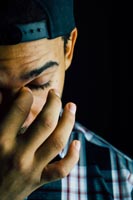
- Have irregular sleep schedule

- Get stressed out (moving, breakups, change at school or at work) or the stress of sleeping in a new environment (change in sleep routine)
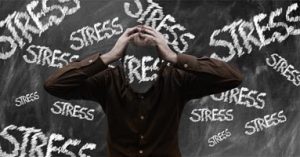
- Sleep in a noisy environment

- Have an illness, fever
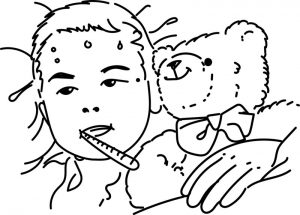
- Drink alcohol during the evening or close to bedtime

- Exercise to close to bedtime
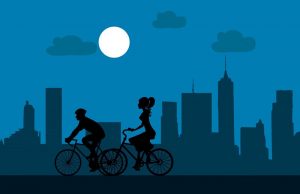
- Other sleep disorder such as sleep apnea.
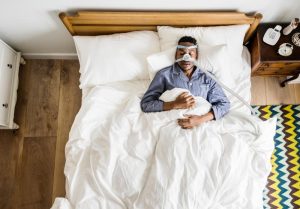
Sleepwalking appears to be linked to how the brain is developing and maturing during infancy. So as people get older and their central nervous system develops, the risk of experiencing sleepwalking episodes diminishes. New studies found that children with somnambulism have more of a likelihood to have had night terror earlier in their life. In fact, both conditions arise as the brain develops during childhood (i.e. a neurodevelopmental phenomenon).

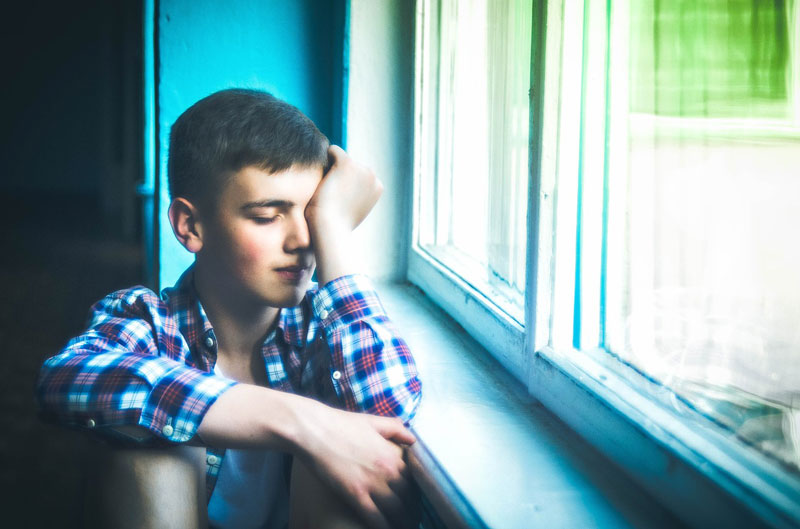
What are the consequences of sleepwalking?
Somnambulism is not a problem by itself for the affected children and most adults. Aside from the potential risk of accidental injury, sleepwalking episodes are relatively benign. Most children will outgrow them, as they get older. Moreover, most sleepwalking episodes are occasional or circumstantial by nature. However, if episodes are frequent, distressful or dangerous, they can become a cause of sleep disruption and deprivation for the sleepwalkers and their families.
Depending on how often episodes occur, fatigue and sleepiness can develop due to the poor sleep quality associated with somnambulism. Moreover, one should keep an eye open if the affected child or adult is sleepy, as recent evidence suggests that up to 45% of sleepwalkers suffer from sleepiness during the day. Sleepiness needs to be addressed as it may have dramatic consequences.
For adults with sleepwalking behaviours that are hazardous or pose a threat, a fear of having dangerous episodes can escalate into fear or stress over going to bed or even anxiety in more problematic cases. With adult sleepwalkers it is of outmost importance to sleep in a safe and secure environment. If sleepwalking is a concern for you and your family, do not hesitate to contact a sleep specialist and sleep clinic to get more insight and proper help.
* SLEEPINESS VS FEELING FATIGUE
Sleepiness is the urge or need, difficult to repress, to sleep during the day. Not to be confused with fatigue, which is a feeling of exhaustion that requires one to rest, but that does not translate into involuntary sleep or an excessive need for it. Tired people can fight sleep without difficulty during the day. Sleepy people, on the other hand, are consumed by sleep. They can fall asleep easily in class, at work or while driving, for example. Sleepiness is not a normal state because it is related to either an acute (sleep deprivation) or chronic sleep loss or poor sleep quality. Severe sleepiness is often a critical symptom of sleep disorders, but also of certain medical or psychological problems. Don’t sleep on it!
